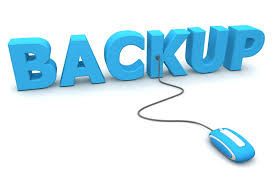The reasons for backing up your data and the ways to do it

If you value the data that has been gathering on your computer for years, you might have thought about creating or already have a backup of your files stacked on some external storage unit. If you do not, it is high time you started thinking about it, because in the present day and age, there are numerous cyber threats which may target your most precious data to gain an easy profit. Among the many other threats, there is one branch of viruses which is currently on the rise and actively infiltrating computers worldwide, called ransomware. If you are unfamiliar with such viruses, you should know three basic characteristics which can be associated with this virus:
- It infiltrates the system stealthily and, in most cases, through deceptive email attachments.
- It scans the computer for files and encrypts them with a complex algorithm, which cannot be decrypted without a special key.
- The victims are demanded to pay a ransom ranging from $100 to $500 USD in exchange of their files.
Cryptolocker, Cryptowall, CTB Locker, Teslacrypt are a few of the most profitable ransomware programs which have extorted millions of dollars around the world. Unfortunately, only in very rare cases the virus investigators manage to come up with decryption tools allowing the users to unlock their documents safely, without having to pay the ransom. Even after paying to the virus creators, the decryption key may not be issued so the files remain locked. Therefore, the only way to truly protect your files is to backup data.
There are several ways you can backup your data, each having their pros and cons. Before choosing one method or the other, you have to think what sort of information you want to store, what storage capacity is necessary. To help you decide, we have prepared a short overview of the main backup strategies you can employ to protect your data.
1. External backup
External data storage is one of the most common procedures used for backing up storage. It is relatively inexpensive too. Today, the external hard drives are becoming increasingly spacious, and you can fit up to 6 Terabytes of data on them, so, if you are a regular user, you will probably find a hard drive with more than enough space for storing your data. Similarly, you can store your data on USB drives or CDs, DVDs. Unfortunately, it cannot be stated that external backup is the safest option to protect your data from ransomware viruses. In fact, if you keep an external hard drive or the USB key connected to your computer at the time of virus infiltration, there is high chance that the files on these platforms will be infected too. Therefore, you should always disconnect the drive from the computer when you are not using it. Also, if you want to recover your files from the backup after the ransomware attack, you have to make sure all of the virus components are completely eliminated from the computer before you plug in your external drive.
2. Cloud backup
If you do not have time for manually backing up files, you may find the cloud backup function quite useful. Of course, this remote data storage method requires an internet connection. By signing up to Carbonite, Google Drive, Dropbox, iDrive, iCloud or any other of the numerous cloud storage platforms, you will grant yourself a luxury of not worrying about backing up your files as they will automatically synchronise and will be transferred to the remote backup. Plus, you do not have to worry about the storage of the purchased equipment. However, you should keep in mind that some of the ransomware viruses can infiltrate these remote storages as well. Therefore, for the best protection of your data, it is recommended to combine several methods and keep backups on several different platforms.
3. NAS backup
NAS or a network attached storage is also a remote server, which stores the user’s data. It is able of managing several computers at once and automatically update your data according to your desire. It is safer that cloud backup and is often used by companies. Unlike cloud backup, NAS requires purchasing particular gear to work. Of course, such method is more expensive, but if you value your files, it is something worth investing in.
4. Time Machine for Mac
If you are a Mac user, you may try out the Time Machine drive. It also backs up data automatically and works wirelessly, so you do not have to waste your time every time you want to back up new data. You can set it to backup data every single hour or every day until it is completely full. However, if you choose to opt for a cheaper backup solution, you can as well use the methods mentioned above.

